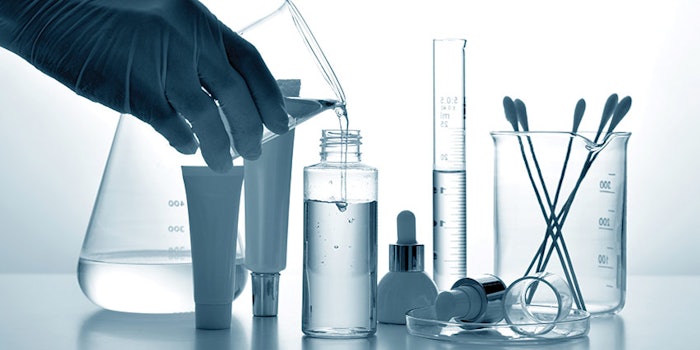
Read the full article in the March 2021 digital edition. . .
I am writing this column at the end of 2020. What a year! I had anticipated the CTPA would spend much of its time focusing on the discussion outcome between the United Kingdom (UK) and the European Union (EU), and preparing the members and industry for Brexit. Of course, none of us could have anticipated the effects that COVID-19 would have on the industry and the world. Even today, people are still reeling from the impact on a business level, and how lives and livelihoods have been affected.
The cosmetic industry demonstrated how it could contribute positively in response to the pandemic, with increased production of hand sanitizer and other essential hygiene products. Some companies who traditionally did not have such products in their portfolios even dedicated manufacturing to supply hand sanitizer and donate those products to health institutions.
During the initial months of the health emergency in the UK, as in other parts of the world, the increased demand for hand sanitizer created a shortage of ethanol and other critical ingredients. To help with this, CTPA set up its COVID Emergency Response Exchange (CERE) to match those in need with those who could provide ingredients, packaging and manufacturing capabilities. CERE was based on an initiative launched by the Canadian association, Cosmetics Alliance Canada, which kindly shared the model with CTPA to be replicated for the UK. CERE has made more than 170 matches between manufacturers and suppliers of critical products, ingredients and components, resulting in 185 products being produced. While activity on CERE has abated, the Exchange will remain open for as long as is needed.
In addition to the health crisis the world is experiencing, Brexit has happened, confounding the rules and regulations for business between the UK, EU and the world. The present column serves as an update for where things stand. On a separate note, with COVID-19 still prevalent, I wish Cosmetics & Toiletries and its readers a healthy and successful 2021.
Brexit and New Rules
On Dec. 31, 2020, the Transition Period ended and on Jan. 1, 2021, the UK became a third country to the EU. The UK left the EU on Jan. 31, 2020, but with the Withdrawal Agreement (deal), this would mean a Transition Period was in place where the EU law remained applicable in the UK until the end of 2020. During the Transition Period, the UK government and EU commission discussed their future relationship to agree with a Free Trade Agreement (FTA). Without an FTA, from Jan. 1, 2021, the UK would have to trade with the EU under WTO (World Trade Organization) rules. The FTA was agreed upon on Dec. 24, 2020.
While the details still need to be scrutinized, the UK and the FTA allow both quota and tariff-free trade. In order for companies outside of the UK to sell cosmetics in this market, it is important to know and prepare for the new legislative frameworks for cosmetics and chemicals applicable at the start of 2021.
UK Cosmetic Regulation
Following the EU Referendum in 2016, the UK government prepared a whole raft of UK legislation to replace all of the EU laws in place. In March 2019, the UK Cosmetics Regulation Statutory Instrument (SI), which is part of the Product Safety and Metrology etc. (Amendment etc.) (EU Exit) Regulations 2019, was passed in UK Parliament. The SI would have come into force on exit day in the event of a “no deal” Brexit. Having left with a deal during the Transition Period, the UK Cosmetics Regulation SI went through several amendments and would take full effect starting Jan. 1, 2021.
The UK Cosmetics Regulation reflects the principles of the EU Cosmetic Products Regulation (1223/2009) (CPR). It is risk-based and has consumer safety at its core, with safety being assured through an assessment documented in the Product Information File. The animal testing bans of the CPR are maintained under UK Cosmetics Regulation for both finished cosmetic products and cosmetic ingredients.
The definition of a cosmetic product is the same as for the CPR: “Cosmetic product means any substance or mixture intended to be placed in contact with the external parts of the human body (epidermis, hair system, nails, lips and external genital organs) or with the teeth and the mucous membranes of the oral cavity with a view exclusively or mainly to cleaning them, perfuming them, changing their appearance, protecting them, keeping them in good condition or correcting body odors.”1
There are, however, UK-specific requirements, which means that there will be some duplication for cosmetic products destined for both the UK and EU markets. Aspects of the UK Cosmetics Regulation that still need to be clarified include how ingredients will be managed going forward, and how cosmetovigilance and the reporting of serious undesirable effects will be achieved. CTPA is in discussion with the UK authorities on these important issues.
. . .Read more in the March 2021 digital edition. . .
References
- Cosmetic product definition. The Cosmetic, Toiletry and Perfumery Association (CTPA). Available at: https://www.ctpa.org.uk/definition-ofa-cosmetic










